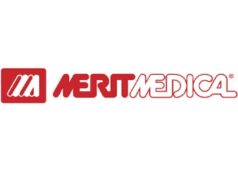This advertorial is sponsored by Merit Medical.
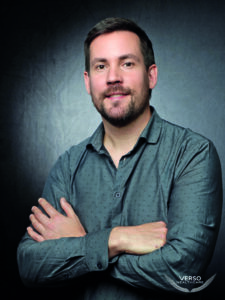
When performing complex biopsy and drainage procedures in daily clinical practice, having reliable and adaptable tools helps to manage expectations and tackle a variety of cases. In this article, Interventional News speaks to Fabrice Deprez (Centre Hospitalier de Wallonie Picarde, Tournai, Belgium), who details how the applicability of their tools to many clinical scenarios supports better optimisation of specimen size, sample length and efficient direct-puncture drainage.
“The most common challenge in our daily practice is the variability of the cases we see. We also work within limited resources, so we need to make careful decisions around equipment use and inventory management,” says Deprez. For these reasons, interventionists must select “high-quality and adaptable medical devices” that are configured to a range of imaging guidance systems, he shares.
Meeting the challenge of lung biopsy
According to Deprez, lung biopsies are among the more technically demanding biopsy procedures in interventional radiology (IR) and come with well-documented risks such as pneumothorax and bleeding. Choosing the right needle system can play a significant role in limiting complications, particularly when working with smaller lesions or high-risk patients.
“Lung biopsy is a common but challenging procedure, and it carries risks. Consequently, I was looking for a device that could help me avoid these complications,” he states. Deprez describes that, “for lung biopsy, we absolutely need to use a sharp coaxial system, and to reduce needle diameter—to ideally 20 gauge—to reduce pneumothorax risk.” Equally, Deprez explains that they also sought to reduce the number of collected tissue samples by optimising specimen size, especially when using thin needles, and to control sample length by tailoring the needle to the targeted lesion diameter, in order to reduce haemorrhage.
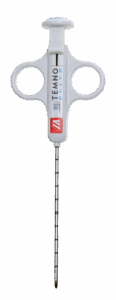
For this purpose, Deprez and his team selected the valved coaxial Temno Elite™ (Merit Medical®) biopsy needle, which has helped him avoid blood leakage and air embolism when performing lung biopsies.
“I found the perfect answer to all of my expectations,” says Deprez, pointing to several favourable factors of Temno Elite including: a sharp, valved coaxial system suitable for fine-gauge needles, the ability to collect a full tissue core even at small diameters, and control over sample length to match the target lesion.
The device’s Total Core biopsy technology is indicated for use in various soft tissue locations, such as liver, lung, lymph nodes, kidney and other soft tissue suspect lesions. To achieve accurate diagnosis and treatment, obtaining an adequate sample size via biopsy is paramount, Deprez says. Further, he adds that he has been able to achieve this while ensuring procedure control with Temno Elite’s Sample Assist feature that enables “one-handed retrieval of tissue samples, with no fragmentation or excessive manipulations”, Deprez adds. “For me, I have observed gains in precision, sample quality and procedure time, and improvements in terms of complications,” he says.
Flexibility in drainage
Outside of biopsy, fluid drainage remains at the core of IR clinical practice. Having access to tools that accommodate different anatomical and clinical scenarios is essential, Deprez explains, especially when transitioning between imaging modalities or care settings.
Two drainage products regularly used by Deprez and his team—One-Step™ and the ReSolve® locking drainage catheter (both Merit Medical®)—offer strengths suited to different procedural needs.
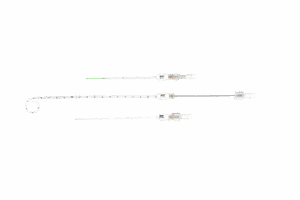
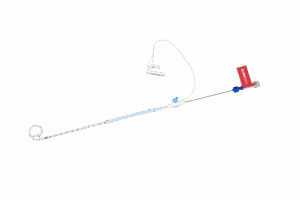
“OneStep is ideal for straightforward drainage cases, mainly for ascites, pleural effusion or very small collection aspiration,” he says. The catheter can have a ‘pigtail’ shape and has multiple large holes to reduce drainage hole occlusion and increase flow rates to reduce procedure times, “guaranteeing very efficient drainage”, Deprez states.
The hollowed needle’s sharp point allows for more “direct puncture with back flow control, which is perfect for easy drainage with or without image guidance, and is consequently the ideal solution for all clinicians,” he continues.
In complex scenarios, for example when dealing with viscous fluids associated with deep abscesses or necrotic pancreatitis, Deprez has reached for the ReSolve catheter due to its “highly adaptable” function.
“ReSolve’s variability of diameter from 6.5Fr to 14Fr allows us to manage a wide range of drainage cases and fluid types, even the most viscous,” says Deprez. He also highlights ReSolve ’s compatibility with several imaging systems, including ultrasound, computed tomography (CT), C-arm cone beam CT and X-ray, which can be beneficial when switching modalities mid-procedure.
Looking at ReSolve ’s design more closely, Deprez describes the locking drainage catheter as “sharp and slender—packaged with both a trocar stylet and flexible or metal stiffening canula, allowing for direct puncture insertion or Seldinger techniques”. He notes that features such as radiopaque tip markers and a secure locking mechanism aid in safe placement and longer-term stability, particularly in outpatient or follow-up scenarios.
Benefit to resource planning
Beyond technical everyday use, Deprez highlights another practical benefit in the “excellent cost-to-quality ratio” of these devices which has helped to streamline inventory and reduce variability in device selection. “Due to the adaptability of Merit’s biopsy and drainage solutions, I can optimise my stock of materials and my supply chain management, decreasing the variability of the devices needed,” Deprez explains. From a cost perspective, the ability to use a single device for multiple procedures in a varied range of patients “helps to mitigate unnecessary expenditure—an increasingly relevant factor for departments operating within budget constraints”, he contends.
“In the field of drainage and biopsy, Merit has a complete catalogue that allows us to manage every challenge that we face in our daily activities with confidence,” Deprez continues. He adds that, with his current “low-cost but highly competitive” toolkit, he and his team can perform procedures more efficiently to ultimately improve the patient’s experience.

